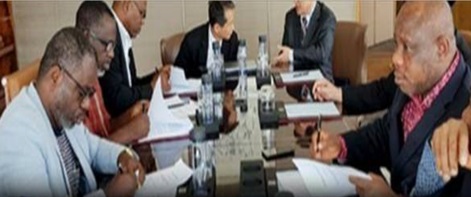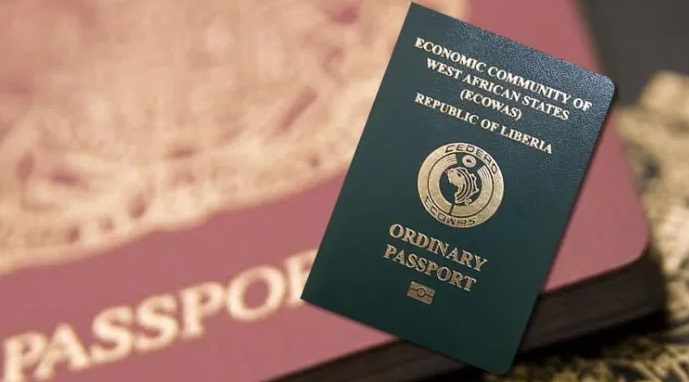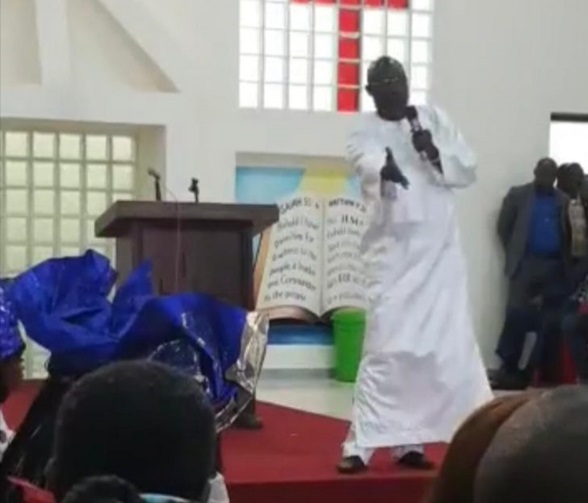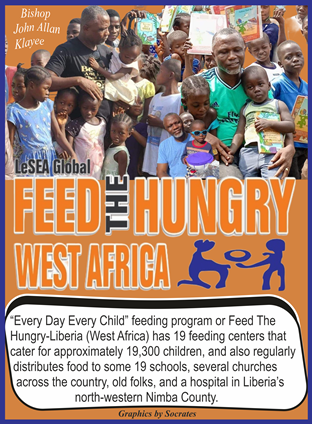Details of a reported US$536 million loan agreement between Liberia and a Singapore-based investment company, Eton Finance Private Limited is still sketchy, nearly a week after a delegation from the CDC-led government returned from Hong Kong and Japan.
The delegation comprised Finance and Development Planning Minister Samuel Tweah, Public Works Minister Mobutu Nyenpan, Minister of State Nathaniel McGill, Justice Minister Musa Dean and Cllr. Archibald Bernard, Legal Advisor to the President, has reportedly signed a Memorandum of Understanding with a financing group of Asian companies for a reported US$536 million agreement to access funding for the implementation of the coastal road project.
The failure of the delegation and the government to make the MOU public is raising serious transparency and accountability issues for the CDC-Weah-led government.
To date, it is unclear whether an actual loan deal was signed or just a Memorandum of Understanding. If it was signed, what were the terms? Is there a letter of intent with terms and conditions? Why hasn’t it been made public?
Last week, Presidential Press Secretary Sam Mannah, during an appearance on OK FM dismissed suggestions that the US$536 million loan agreement signed in Hong Kong by the Government of Liberia was not in violation of the International Monetary Fund (IMF) regulation as being reported in some quarters.
According to Mr. Mannah, the IMF did not advise Liberia against borrowing or taking external loan, contrary to what is being reported in the media. Instead, Mr. Mannah explained that the IMF sets a threshold of US$1.5 billion that Liberia cannot exceed, relative to taking loan.
The presidential press secretary added that the IMF has also said once loans taken by Liberia will be used for developmental purposes and is sustainable, then it can go ahead to do so.
The presidential press secretary explained that the US$536 million loan which would be used to construct the coastal highway from Buchanan to Harper is a great developmental initiative that President George Manneh Weah has prioritized to bring relief to people in that corridor of Liberia.
When completed, Manneh said the highway will contribute greatly to Liberia’s economy, thus increasing the country GDP between 15-20 percent as projected by economists.
Economists disagree. The IMF, in Article IV, makes it clear about the reduction of space to acquire more debts.
“The IMF can never tell a government the amount of debt you can acquire. Liberia is urged to acquire only concessional loans with low below market rates and terms. There is no economist that can predict the contribution of a road to GDP without an economic rate of return analysis,” a long-time economist told FrontPageAfrica Sunday.
According to a source privy to the discussion the deal, which is reportedly in the form of a loan payable over 22 years, it’s subject to legislative approval and will cover a little over 500 kilometer of roads.
But there are concerns that the deal may run Liberia into more trouble as it may breach international principles for external borrowing.
IMF GUIDELINES SIGNAL DANGER
The IMF, which has set guidelines for external borrowing, has warned Liberia about the risks it may incur.
The current Debt Sustainability Analysis (DSA), according to the IMF, shows that the risk of debt distress for Liberia remains moderate but close to being high and warrants caution.
“Since September 2016 to June 2017, the total debt stock has increased from US$597 million to US$736 million. Currently, the external debt stock comprises mostly multilateral loans. In FY2017, around US$218 million of external loans have been ratified, and the debt accumulation is expected to continue.”
Although Liberia’s debt-to-GDP ratio is expected to increase from 23.1 percent in FY2017 to 27.5 percent in FY2019, the IMF says the surge is higher than the 23.4 percent in 2016.
But the debt-to-exports ratio has improved mainly due to higher projected commodity prices and a moderate upturn in gold and iron ore mining, which is projected to increase from 76.5 percent in FY2017 and to a peak of 89.2 percent in FY2019, lower than previously projected at 99 percent in 2016.
Despite the good signs of prospective increase in the country’s debt-to-exports, the IMF says “debt vulnerabilities remain substantial, with some breaches of thresholds under extreme shock scenarios” including the recent sharp decline in the exchange rate and prices of major exports.
The IMF reform policy on public debt limits for countries with little or no access to concessional financing states that “Debt conditionality would be expected to be deployed in cases where countries are judged to have significant debt vulnerabilities…”
The IMF regulation adds that in the case of limitation, debt would be specified in terms of the nominal value of debt, with the precise specification depending on country circumstances, including the quality and availability of data.
Depending on the extent of financial market integration, separate limits on externally issued debt and domestically-issued debt could be justified.
Also, the regulations warn countries like Liberia that normally relies on concessional loans with a looming debt distress to focus its development programs on performance criterion.
“In all countries where the use of debt conditionality is warranted but the capacity to monitor debt is weak, expanding the coverage of debt limits to cover all forms of external borrowing in an accurate and timely manner poses an operational challenge,” the IMF regulation for borrowing states.
As Liberia remains vulnerable to external shocks as a commodity exporter, the authorities need to be committed to a prudent borrowing strategy, the prioritization of pro-growth projects, and the diversification of the economy to make it more resilient to external shocks, the IMF warns.
The government is yet to reveal plans to diversifying the economy, while dependence on the extractive sector is still massive and with looming uncertainties in global prices, economists consider the economy more vulnerable.
WORLD BANK DEBT LIMIT
Since reaching the Heavily indebted Poor Countries (HIPC) in 2010, borrowing space remains tight and the Ellen Johnson Sirleaf’s administration stomached the debt limitation set up by the IMF and the World Bank ceiling for borrowing.
By the end of June 2017, the total external debt stock stood at US$736 million or 35 percent of GDP with expectations of ratifying about US$100 million concessional loans.
The World Bank is concern about Liberia retrogressing into its HIPC stage, suggesting that while the debt relief provides space for borrowing it also cautions against “eroding gains through rapid re-accumulation of external public debt thus undermining borrowers’ debt outlook.”
The Bank, at the same time, emphasized the importance of countries having a ceiling for its debt capacity.
For countries with lower capacity and higher debt vulnerability non-concessional borrowing is reviewed case-by-case. The outcome of the loan-by-loan review determines IDA’s decision on whether to take measures. The loan-by-loan assessment takes into account country-specific and loan-specific factors, the World Bank says. Source: FPA


